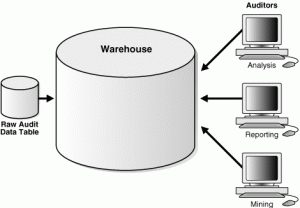 Since Motorola first introduced Six Sigma in the 1980’s as a methodological way of isolating and reducing manufacturing defects, it has become an industry standard for implementing more effective business processes. While its primary goal was to reduce manufacturing defects to 3.4 defects per million, its applications across business sectors rapidly caught on and, to this day, continues to evolve. An interesting and exciting newer application for Six Sigma has been in the area of improving data warehousing.
Since Motorola first introduced Six Sigma in the 1980’s as a methodological way of isolating and reducing manufacturing defects, it has become an industry standard for implementing more effective business processes. While its primary goal was to reduce manufacturing defects to 3.4 defects per million, its applications across business sectors rapidly caught on and, to this day, continues to evolve. An interesting and exciting newer application for Six Sigma has been in the area of improving data warehousing.
Data Warehousing and Six Sigma
Employees across industry rely on easy access of huge amounts of information to do their job efficiently. From accessing corporate account contacts to looking up product specifications, it is vital that the information needed to perform daily business tasks is stored effectively, quickly attainable and easy to retrieve. The process of centralizing data for easy access by multiple users is known as data warehousing.
As companies grow, the software products that handle different parts of their data storage and retrieval processes may be less and less compatible. Down time translates into lost income, especially as companies grow. Six Sigma strategies can be used to mitigate the inconsistencies and redundancies in data warehousing, making the user experience more effective and the overall company more profitable. Six Sigma is a powerful tool for companies looking to improve their data warehousing processes across organizational divisions.
Bank of America Case Study Provides an Example
Utilizing the Six Sigma philosophy of keeping the end goal in mind when implementing a Six Sigma strategy, the Bank of America company case study reveals lucrative improvements available with the application of Six Sigma:
- Applying stronger statistical tools means getting to the root cause of why an application isn’t functioning properly at all times.
- Using more precise analytics can uncover system redundancies and software incompatibilities that result in delays and downtime.
- Involving users in the process improves product development.
- Removing redundant software applications and processes speeds up system response time.
While companies with huge amounts of data to manage provide an interesting case study for the application of Six Sigma in data warehousing, smaller companies can put the practices to good use, as well. As global competition intensifies, Six Sigma should quickly expend into more areas of business for the simple fact that it has a proven track record of helping companies at all levels leverage the competitive marketplace advantage.
As more and more industries embrace the power of Six Sigma to address 21st century corporate challenges, smart leaders are needed to apply novel approaches of the theory to the great diversity of real-world challenges still emerging. Keeping a strong foothold in the markets today means utilizing every tool possible to reduce waste, improve product quality and boost revenues.
Six Sigma is one of the strongest business improvement tools available today with a successful track record of nearly 25 years, evolving through direct business application. Well-prepared leaders are needed to develop the future of Six Sigma in a variety of dynamic organizational environments. Professionals interested in developing Six Sigma leadership potential can get more information from Villanova University’s Six Sigma Certification program here.
